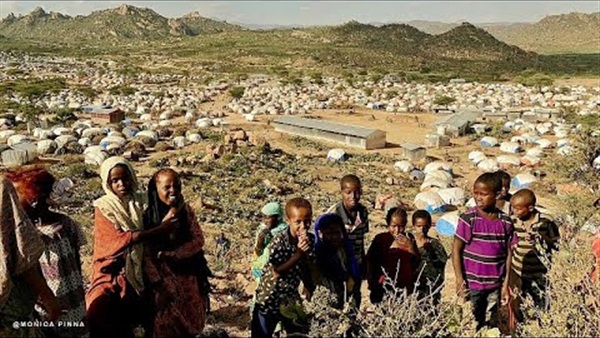Two million displaced in Ethiopia: Three questions on Tigray

The military offensive in Ethiopia’s Tigray region has dragged on for nearly six agonizing months, forcing more than 2 million people out of their homes. Despite government attempts to keep journalists out, and information in, reports have emerged of mass atrocities by both Ethiopian and Tigrayan fighters.
Ethiopia has long been a bulwark
of regional stability in the Horn of Africa. How did it get here? And what
would it take to bring the fighting to an end?
What led to the conflict?
Tigray is the northernmost region
in Ethiopia, home largely to an ethnic group of the same name. For nearly 30
years following Ethiopia’s civil war, which ended in 1991, Tigrayans led the
country’s ruling coalition, the Ethiopian People’s Revolutionary Democratic
Front. But Tigrayans account for only about 6% of the country’s population, and
their political dominance was a constant source of tension. After protests over
the EPRDF’s repressive rule in 2018, the party appointed a new leader, Abiy
Ahmed, who is not Tigrayan.
Mr. Abiy vowed to unite Ethiopians
regardless of ethnicity and centralize power away from the regions. Many
Tigrayans feared his ascent would force them to the margins of Ethiopian
society. The rift widened when Tigray went ahead with elections last year,
flouting a national directive that they be postponed until after the pandemic.
The conflict turned violent in
November. Tigrayan forces attacked an Ethiopian army base in the region, and
the government retaliated with a major military offensive. Neighboring Eritrea,
with whom Mr. Abiy had recently reconciled, joined on the side of the Ethiopian
army. Militias from Ethiopia’s Amhara region have also joined in against
Tigray. Six months later, massacres, rapes, and massive displacements of
civilians have become weapons of war, with both sides accused of atrocities.
What is at stake for Ethiopia?
Ethiopia’s stability has long been
its calling card. Strategically located in the Horn of Africa, and sandwiched
between volatile countries like Somalia, Sudan, and South Sudan, Addis Ababa
has earned powerful allies with its peace and economic growth. For countries
like the United States, it is a bulwark against the spread of Al Qaeda-linked
terror groups in the region.
That stability is now under
existential threat. “The idea of Ethiopia as a united community of people,
which has always been fragile,” has taken a hit, says Yonatan Fessha, a
professor at the University of the Western Cape in South Africa who studies the
rule of law in Ethiopia. And the longer the fighting continues, the more likely
it is to polarize and radicalize both sides. “The country as it exists now is
at stake,” he adds.
For people living in the region,
meanwhile, what is at stake is nothing less than life as they know it.
According to the United Nations, 4.5 million of the region’s residents
currently “need lifesaving assistance.” More than 60,000 have crossed the
border into neighboring Sudan, and the U.N. high commissioner for human rights
has asked for access to Tigray to investigate possible war crimes.
Those suffering most are not the
Tigrayans who wielded outsize power in the Ethiopian government for the past 30
years, Dr. Fessha notes. Rather, they are the people who are often hit hardest
by war: poor people.
What would it take to end the
conflict?
It is hard to say. Much of the
region remains in a telecom blackout, and journalists and aid groups have
struggled to access areas outside major cities and towns.
But what is known has rattled even
Ethiopia’s friends. The African Union, which is based in Addis Ababa, has received the government’s permission
to participate in investigating possible human rights abuses. Mr. Abiy has
criticized Western critics’ approach, calling in a March speech for “African
solutions to African problems.”





